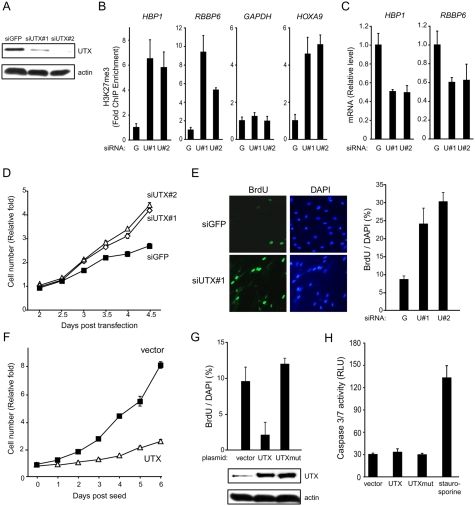Figure 3.
UTX is necessary and sufficient to mediate cell cycle arrest of primary human fibroblasts. (A) Depletion of UTX protein by siRNAs. (B) UTX depletion causes increased H3K27me3 levels at UTX-occupied sites of target genes. ChIP-qPCR of H3K27me3 at the indicated promoters is shown; HOXA9 and GAPDH served as positive and negative controls, respectively. (C) UTX depletion causes decreased mRNA levels of HBP1 and RBBP6 as assayed by qRT–PCR. (D) UTX depletion increases cell proliferation. Serial cell counts of fibroblasts transfected with one of two siRNAs targeting UTX versus control siRNA targeting GFP. (E) Increased S-phase entry of UTX-depleted cells. BrdU immunofluorescence (left) and quantification (right) showing increase percentage of S-phase cells in population versus control. n = 1000+ for each condition. (F) Overexpression of UTX results in decreased cell proliferation. Serial cell counts of fibroblasts transduced with UTX or puromycin-resistant vector alone. (G) Catalytic activity of UTX is required to induce cell cycle arrest, as measured by BrdU incorporation. (UTXmut) UTXH1126A. n = 1000+ in each condition. (H) UTX overexpression does not induce apoptosis. Staurosporine treatment served as positive control. Mean ± SD is shown in all bar graphs.

